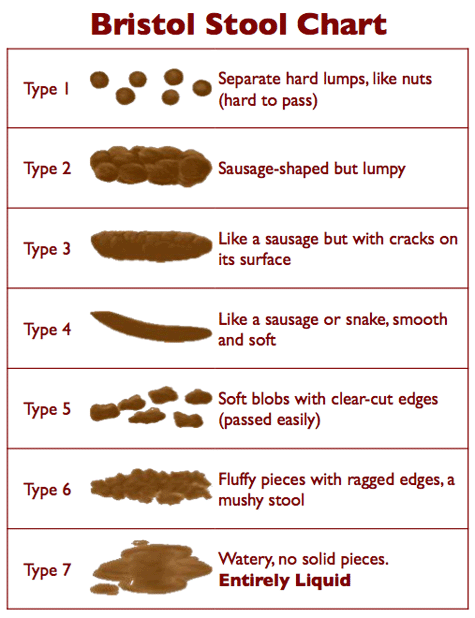Oh poop...
This is the second blog in my “3 P’s of the Pelvic Floor" series. My first blog of the series was about peeing. Click here if you would like to read it. Next up, and often referred to as "going #2", is pooping. It's got so many nicknames. In order to keep this blog semi professional, I will refrain from using the 6000 puns I can think of right now. You have to come see me in clinic to get the good stuff.
So....who has ever had issues with their bowels? Constipation? Diarrhea? Difficulty emptying all the way? Pain during bowel movements? Hemorrhoids? If you didn’t say yes to at least one of these, you’re either VERY lucky or you’re lying.
EVERYBODY POOPS.
It’s a fact of life. You eat. Your body pulls out nutrients and water. Then you form stool and poop it out. Why are so many people embarrassed by this bodily function? We often take pooping for granted until something goes wrong.Few people feel comfortable talking about their poop, much less asking others about their poop. A lot of you may be wondering what is normal.
I don’t poop everyday. I must be constipated
Anywhere from 3 times per day to 3 times per week is normal. That means that it’s perfectly normal to go every other day, as well as up to 3 times per day. When it comes to pooping, quality is just as important as quantity. The Bristol Stool Chart is often used to classify stool into one of seven types. The types range from hard pellets to completely liquid. Type 3 and 4 are considered ideal.
Constipation
I often have to strain to poop, and then nothing but little rabbit pellets come out.
Chronic Constipation = infrequent bowel movements (less than 3 times per week) or difficult passage of stools that persists for several weeks or longer. Stool in the type 1 and 2 range often coincides with being constipated.Causes: There are A LOT of reasons why someone can be constipated, some of which are serious and potentially life threatening. If you experience a sudden change in bowel habits, contact your healthcare provider for a medical workup. Some potential causes include:
Blockages/bowel obstruction, rectal bulge/prolapse, colon cancer, rectal cancer, abdominal cancer pressing on the cancer
Problems with nerves around the colon/rectum
Multiple sclerosis, Parkinson’s disease, spinal cord injury, stroke
Difficulty with the muscles involved in elimination
weak pelvic muscles, inability to relax pelvic muscles, incoordination of pelvic muscles
Hormones, diabetes, pregnancy (yay babies....but DANG the pregnancy constipation), thyroid issues
General risk factors increased age, dehydration, diet low in fiber, limited/no physical activity, medications such as narcotics, hemorrhoids
I’ve always been constipated. What can I do?
Dietary changes: high-fiber foods (fruits, vegetables, beans, whole grains)
Sometimes an extra cup of coffee can help
Stay hydrated…. Water, water, water!
Regular exercise
Do not put off the urge to poop (easier said than done with some jobs). Try to create a regular schedule for bowel movements, especially after meals.
Constipation cocktail: 1 cup Oat bran, 1 cup applesauce, 1 cup prune juice. Start by taking 1 tablespoon at night. If no change after a couple of days, try 2 tablespoons.
Limit time on the toilet....Put DOWN the phone!If it doesn't happen within10-15 minutes, abandon ship and try again later.
Minimize straining....I'm talking to you "power pooper"! Do not push
Gentle exhale (blowing out birthday candles)
Try to relax pelvic floor.
8. Prop your feet up to improve angle of rectum
When God designed the human race thousands and thousands of years ago, there were no toilets. Humans were designed to poop in a deep squat. Think about toddlers when they start passing more solid stool. They often times go squat in a corner to poop. By elevating your knees higher than your hips, you place your pelvis into a more tilted position. This changes your ano-rectal angle and creates a straighter shot for the stool to exit.
You can do this via certain products, such as the “squatty potty”, or even just by using a step stool or turning a trashcan on its side. Click here to purchase a Squatty Potty through Amazon ($25 as of June 2020). *NOTE: Physical Therapy of Concordia makes a small percentage off of the sale. :)
And of course...DEFINITELY see a pelvic floor PT if you are having pain during bowel movements, strain to poop, or feel like you have difficulty emptying.The above tips are also my advice if you suffer from hemorrhoids. Chronic straining is often the culprit and can make hemorrhoids worse.
Diarrhea
On the other end of the poop spectrum we have loose stools (Bristol Type 7). Diarrhea is defined as an increase in frequency and liquidity of stools. Diarrhea can be a benign side effect of poor food choices, a GI bug, or a lot of stress. If it lasts more than a couple days, is accompanied by a high fever, or you become dehydrated, you should probably contact your care provider. It is also important to make sure that your little ones stay hydrated with an electrolyte solution, like Pedialyte, when suffering from diarrhea to replace the electrolytes lost.
It is perfectly normal to have a little bowel/fecal incontinence with explosive diarrhea. Let's be real, no amount of pelvic floor strength could hold back that volcano. What's not normal is if you regularly have staining/streaking in your underwear, have difficulty making it to the bathroom, or have difficulty getting clean after having a bowel movement.
Digestive disorders such as IBS, ulcerative colitis, or Crohn’s disease often have diarrhea as one of their main symptoms. These need medical intervention to manage.If you want more info on the Bristol Stool chart and what the different shapes and colors of your poop mean.... Click here
Pain or difficulty emptying
Pain during bowel movements is often due to an incoordination between the colon/rectum/anus and the pelvic floor muscles/anal sphincter. If your pelvic floor is contracting while trying to poop, you are essentially narrowing the opening for the stool to exit.
Another cause of pain during defecation is hard stool. That one is a no brainer. Ever been so constipated that it felt like you were trying to poop razor blades? That first poop after a vaginal delivery is almost as bad as the childbirth itself....am I right?! The tissue in the colon is very vascularized. Hard stool can create micro-tears in the colon as it tries to exit. There are also VERY serious reasons blood could be present in your stool. Click here for a symptom checker from Mayo Clinic as a resource. If this is a prolonged or new problem, definitely see your provider.
Difficulty emptying your bowels is often due to incoordination of the pelvic floor muscles. The technical term for that is dyssynergic defecation.
If you suffer from any of the above (constipation, incontinence, pain, difficulty emptying), ask your provider if pelvic floor PT would be a good addition to your treatment plan for improved pelvic floor strength, coordination and control.
For whatever reason, it much more socially acceptable to have urinary issues than bowel issues. That does not make bowel dysfunction less prevalent. It just means not as many people are open and honest about it. Please know that it is worth mentioning to get help in any way that you can.





